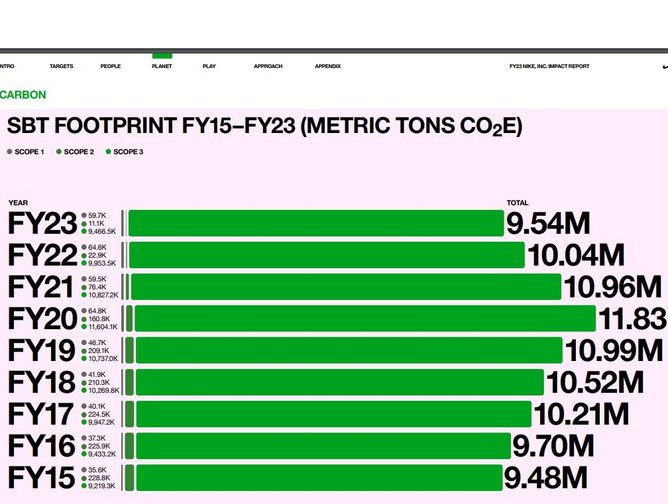NIKE Aims Higher After Hitting Some Carbon-Reduction Targets

Global sportswear company NIKE is setting out a number of challenges it faces as it strives to cut its carbon emissions across its business and supply chain.
The sustainability section of its 2023 Impact Report outlines progress in a number of key areas, including:
- 96% of its energy came from renewable sources in 2023 compared to 48% in 2020
- Scope 1 and 2 emissions are down 69% from 225,644 tons of CO2 in 2020 to 70,723 in 2023
- Scope 1 and 2 emissions are down 73% against 2015 baseline, beating its target of 65%
- 100% of waste was diverted from landfill in NIKE’s extended supply chain, with 80% recycled into NIKE products and other goods
Stretching the targets
The report says: “In a rapidly changing environment, we are constantly monitoring our carbon footprint and revisiting our business practices, based on the most current scientific data available.
“In FY19, we set an ambitious Science-Based Target to reduce our carbon footprint by 2030, including a 65% absolute reduction across Scope 1 and 2 emissions and 30% across Scope 3 emissions from a 2015 baseline.
“In addition to these 2030 targets aligned to the Science-Based Targets initiative (SBTi), NIKE has set a series of 2025 carbon targets to further accelerate our efforts (with an FY20 baseline and aligned to the timeframe of our other corporate targets).”
How is NIKE doing it?
It adds that efforts to decarbonise NIKE’s value chain and meet these targets include work to: innovate and scale low-carbon materials; support suppliers’ transition to renewable energy; reduce air freight; boost leadership on clean energy and efficiency investments in NIKE’s owned and operated spaces; and collaborate across industries to advance its efforts beyond its direct reach.
This refers in part to Scope 3 emissions, which are up 3% against the 2015 baseline (-30% target).

The report says: “The increase in emissions versus the baseline is primarily due to business growth, continued popularity of higher-carbon intensity materials in footwear (such as leather) and the rising emissions intensity of the electricity grid in primary manufacturing regions (particularly Vietnam).
“Efforts to compensate for inevitable emissions increases associated with growth include adoption of renewable energy by suppliers in the supply chain, transition to recycled materials, reduction in waste sent to landfill and decreases in inbound air freight.”
******
Make sure you check out the latest edition of Sustainability Magazine and also sign up to our global conference series - Sustainability LIVE 2024
******
Sustainability Magazine is a BizClik brand
******






